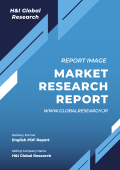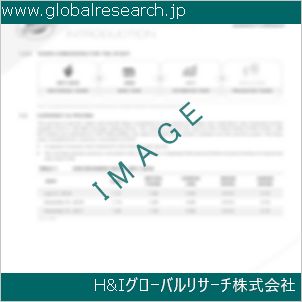Table of Contents
1 Industry Overview of Antimonyoxide
1.1 Definition and Specifications of Antimonyoxide
1.1.1 Definition of Antimonyoxide
1.1.2 Specifications of Antimonyoxide
1.2 Classification of Antimonyoxide
1.3 Applications of Antimonyoxide
1.3.1 Nuclear Application
1.3.2 Non-Nuclear Application
1.4 Industry Chain Structure of Antimonyoxide
1.5 Industry Overview and Major Regions Status of Antimonyoxide
1.5.1 Industry Overview of Antimonyoxide
1.5.2 Global Major Regions Status of Antimonyoxide
1.6 Industry Policy Analysis of Antimonyoxide
1.7 Industry News Analysis of Antimonyoxide
2 Manufacturing Cost Structure Analysis of Antimonyoxide
2.1 Raw Material Suppliers and Price Analysis of Antimonyoxide
2.2 Equipment Suppliers and Price Analysis of Antimonyoxide
2.3 Labor Cost Analysis of Antimonyoxide
2.4 Other Costs Analysis of Antimonyoxide
2.5 Manufacturing Cost Structure Analysis of Antimonyoxide
2.6 Manufacturing Process Analysis of Antimonyoxide
3 Technical Data and Manufacturing Plants Analysis of Antimonyoxide
3.1 Capacity and Commercial Production Date of Global Antimonyoxide Major Manufacturers in 2023
3.2 Manufacturing Plants Distribution of Global Antimonyoxide Major Manufacturers in 2023
3.3 R&D Status and Technology Source of Global Antimonyoxide Major Manufacturers in 2023
3.4 Raw Materials Sources Analysis of Global Antimonyoxide Major Manufacturers in 2023
4 Capacity, Production and Revenue Analysis of Antimonyoxide by Regions, Types and Manufacturers
4.1 Global Capacity, Production and Revenue of Antimonyoxide by Regions 2019-2024
4.2 Global and Major Regions Capacity, Production, Revenue and Growth Rate of Antimonyoxide 2019-2024
4.3 Global Capacity, Production and Revenue of Antimonyoxide by Types 2019-2024
4.4 Global Capacity, Production and Revenue of Antimonyoxide by Manufacturers 2019-2024
5 Price, Cost, Gross and Gross Margin Analysis of Antimonyoxide by Regions, Types and Manufacturers
5.1 Price, Cost, Gross and Gross Margin Analysis of Antimonyoxide by Regions 2019-2024
5.2 Price, Cost, Gross and Gross Margin Analysis of Antimonyoxide by Types 2019-2024
5.3 Price, Cost, Gross and Gross Margin Analysis of Antimonyoxide by Manufacturers 2019-2024
6 Consumption Volume, Consumption Value and Sale Price Analysis of Antimonyoxide by Regions, Types and Applications
6.1 Global Consumption Volume and Consumption Value of Antimonyoxide by Regions 2019-2024
6.2 Global and Major Regions Consumption Volume, Consumption Value and Growth Rate of Antimonyoxide 2019-2024
6.3 Global Consumption Volume and Consumption Value of Antimonyoxide by Types 2019-2024
6.4 Global Consumption Volume and Consumption Value of Antimonyoxide by Applications 2019-2024
6.5 Sale Price of Antimonyoxide by Regions 2019-2024
6.6 Sale Price of Antimonyoxide by Types 2019-2024
6.7 Sale Price of Antimonyoxide by Applications 2019-2024
6.8 Market Share Analysis of Antimonyoxide by Different Sale Price Levels
7 Supply, Import, Export and Consumption Analysis of Antimonyoxide
7.1 Supply, Consumption and Gap of Antimonyoxide 2019-2024
7.2 Global Capacity, Production, Price, Cost, Revenue, Supply, Import, Export and Consumption of Antimonyoxide 2019-2024
7.3 USA Capacity, Production, Price, Cost, Revenue, Supply, Import, Export and Consumption of Antimonyoxide 2019-2024
7.4 EU Capacity, Production, Price, Cost, Revenue, Supply, Import, Export and Consumption of Antimonyoxide 2019-2024
7.5 China Capacity, Production, Price, Cost, Revenue, Supply, Import, Export and Consumption of Antimonyoxide 2019-2024
7.6 Japan Capacity, Production, Price, Cost, Revenue, Supply, Import, Export and Consumption of Antimonyoxide 2019-2024
8 Major Manufacturers Analysis of Antimonyoxide
8.1 Manufacturer One
8.1.1 Company Profile
8.1.2 Product Picture and Specifications
8.1.2.1 Type I
8.1.2.2 Type II
8.1.2.3 Type III
8.1.3 Capacity, Production, Price, Cost, Gross and Revenue
8.1.4 Contact Information
8.2 Manufacturer Two
8.2.1 Company Profile
8.2.2 Product Picture and Specifications
8.2.2.1 Type I
8.2.2.2 Type II
8.2.2.3 Type III
8.2.3 Capacity, Production, Price, Cost, Gross and Revenue
8.2.4 Contact Information
8.3 Manufacturer Three
8.3.1 Company Profile
8.3.2 Product Picture and Specifications
8.3.2.1 Type I
8.3.2.2 Type II
8.3.2.3 Type III
8.3.3 Capacity, Production, Price, Cost, Gross and Revenue
8.3.4 Contact Information
8.4 Manufacturer Four
8.4.1 Company Profile
8.4.2 Product Picture and Specifications
8.4.2.1 Type I
8.4.2.2 Type II
8.4.2.3 Type III
8.4.3 Capacity, Production, Price, Cost, Gross and Revenue
8.4.4 Contact Information
8.5 Manufacturer Five
8.5.1 Company Profile
8.5.2 Product Picture and Specifications
8.5.2.1 Type I
8.5.2.2 Type II
8.5.2.3 Type III
8.5.3 Capacity, Production, Price, Cost, Gross and Revenue
8.5.4 Contact Information
…
9 Marketing Trader or Distributor Analysis of Antimonyoxide
9.1 Marketing Channels Status of Antimonyoxide
9.2 Traders or Distributors with Contact Information of Antimonyoxide by Regions
9.3 Ex-work Price, Channel Price and End Buyer Price Analysis of Antimonyoxide
9.4 Regional Import, Export and Trade Analysis of Antimonyoxide
10 Industry Chain Analysis of Antimonyoxide
10.1 Upstream Major Raw Materials Suppliers Analysis of Antimonyoxide
10.1.1 Major Raw Materials Suppliers with Contact Information Analysis of Antimonyoxide
10.1.2 Major Raw Materials Suppliers with Supply Volume Analysis of Antimonyoxide by Regions
10.2 Upstream Major Equipment Suppliers Analysis of Antimonyoxide
10.2.1 Major Equipment Suppliers with Contact Information Analysis of Antimonyoxide
10.2.2 Major Equipment Suppliers with Product Pictures Analysis of Antimonyoxide by Regions
10.3 Downstream Major Consumers Analysis of Antimonyoxide
10.3.1 Major Consumers with Contact Information Analysis of Antimonyoxide
10.3.2 Major Consumers with Consumption Volume Analysis of Antimonyoxide by Regions
10.4 Supply Chain Relationship Analysis of Antimonyoxide
11 Development Trend of Analysis of Antimonyoxide
11.1 Capacity, Production and Revenue Forecast of Antimonyoxide by Regions and Types
11.1.1 Global Capacity, Production and Revenue of Antimonyoxide by Regions 2024-2029
11.1.2 Global and Major Regions Capacity, Production, Revenue and Growth Rate of Antimonyoxide 2024-2029
11.1.3 Global Capacity, Production and Revenue of Antimonyoxide by Types 2024-2029
11.2 Consumption Volume and Consumption Value Forecast of Antimonyoxide by Regions, Types and Applications
11.2.1 Global Consumption Volume and Consumption Value of Antimonyoxide by Regions 2024-2029
11.2.2 Global and Major Regions Consumption Volume, Consumption Value and Growth Rate of Antimonyoxide 2024-2029
11.2.3 Global Consumption Volume and Consumption Value of Antimonyoxide by Types 2024-2029
11.2.4 Global Consumption Volume and Consumption Value of Antimonyoxide by Applications 2024-2029
11.3 Supply, Import, Export and Consumption Forecast of Antimonyoxide
11.3.1 Supply, Consumption and Gap of Antimonyoxide 2024-2029
11.3.2 Global Capacity, Production, Price, Cost, Revenue, Supply, Import, Export and Consumption of Antimonyoxide 2024-2029
11.3.3 USA Capacity, Production, Price, Cost, Revenue, Supply, Import, Export and Consumption of Antimonyoxide 2024-2029
11.3.4 EU Capacity, Production, Price, Cost, Revenue, Supply, Import, Export and Consumption of Antimonyoxide 2024-2029
11.3.5 China Capacity, Production, Price, Cost, Revenue, Supply, Import, Export and Consumption of Antimonyoxide 2024-2029
11.3.6 Japan Capacity, Production, Price, Cost, Revenue, Supply, Import, Export and Consumption of Antimonyoxide 2024-2029
12 New Project Investment Feasibility Analysis of Antimonyoxide
12.1 New Project SWOT Analysis of Antimonyoxide
12.2 New Project Investment Feasibility Analysis of Antimonyoxide
13 Conclusion of the Global Antimonyoxide (CAS 1309-64-4) Industry 2024 Market Research Report
| ※参考情報 三酸化アンチモン(Antimony oxide)は、化学式 Sb₂O₃ で表される無機化合物であり、アンチモンの酸化物の一つです。この物質は、常温で無色または白色の粉末状で、特有の特性から工業界で広く利用されています。 三酸化アンチモンは、アンチモンが酸素と結合した化合物であり、特に電子機器やプラスチックの燃焼抑制剤としての用途で知られています。日本では、この物質は「三酸化アンチモン」という名称で知られ、化学業界だけでなく、他の多くの産業分野でも利用されています。 三酸化アンチモンの特徴には、耐熱性や耐薬品性があり、特に高温下でも安定した特性を持っています。このため、様々な化学反応や高温プロセスにおいても使用されることが多いです。また、電気的な特性も持ち合わせており、絶縁体としても機能する場合があります。こうした物性が、産業用材料としての使用を促進しています。 三酸化アンチモンの主な種類には、いくつかの異性体がありますが、最も一般的に利用されるのは Sb₂O₃ の形式です。この他にも、形状に応じて微粉末やペレット状の商品が用意されており、用途に応じて選択されます。また、三酸化アンチモンは、様々な方法で合成することが可能で、主にはアンチモンの加熱酸化によって得られます。 用途に関しては、三酸化アンチモンは主にプラスチックや合成樹脂の燃焼濃度制御剤として利用されます。特に、ポリ塩化ビニル(PVC)やポリプロピレン(PP)などの材料に添加されることが多く、これらの材料の火炎遅延性を高める効果があります。また、電子機器においては、絶縁体や基盤材料としても採用されています。その他にも、顔料やゴム、繊維の添加剤としても使用され、様々な分野での応用が見込まれています。 ただし、三酸化アンチモンにはいくつかの課題もあります。例えば、アンチモン自体が毒性を持つため、取り扱いに注意が必要です。健康への影響についても研究が進められており、長期的な曝露が肺や皮膚に影響を与える可能性が指摘されています。このため、三酸化アンチモンを使用する際には、適切な防護措置を講じなければなりません。 さらに、関連技術としては、燃焼試験や熱分解試験が挙げられます。これらの試験を通じて、三酸化アンチモンが添加された製品の耐火性や安全性の評価が行われます。また、ナノテクノロジーにおける応用も進んでおり、ナノサイズの三酸化アンチモンが新たな材料開発に寄与する可能性があります。 総じて、三酸化アンチモンは、その多機能性から産業界で非常に重要な役割を果たしている物質です。今後も新しい応用や技術開発が進む中で、安全に取り扱うための技術や規制も強化されていくことが期待されます。環境への配慮や健康リスクの低減が求められる中で、三酸化アンチモンの持つ特性を最大限に活用しつつ、持続可能な開発を進めることが今後の課題となるでしょう。 |
❖ 免責事項 ❖
http://www.globalresearch.jp/disclaimer


-gr.jpg)









